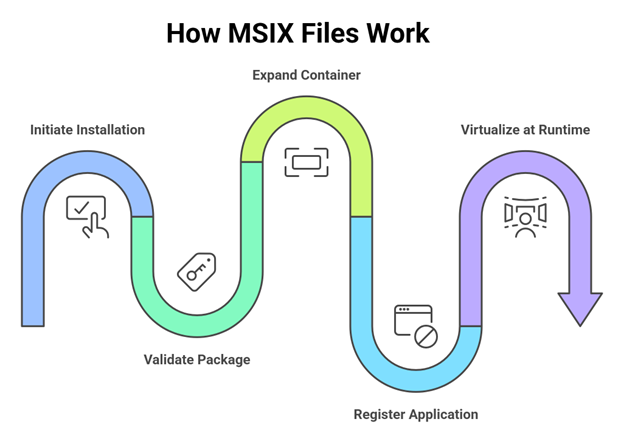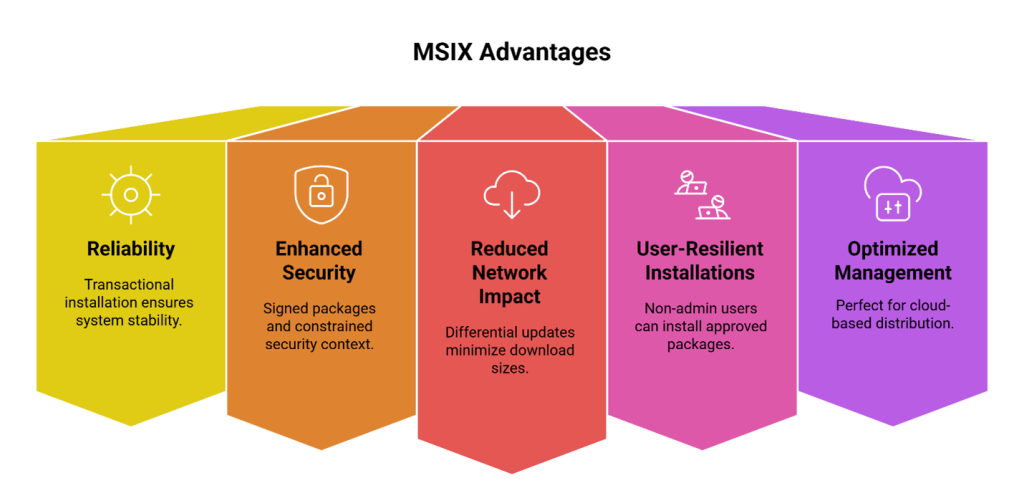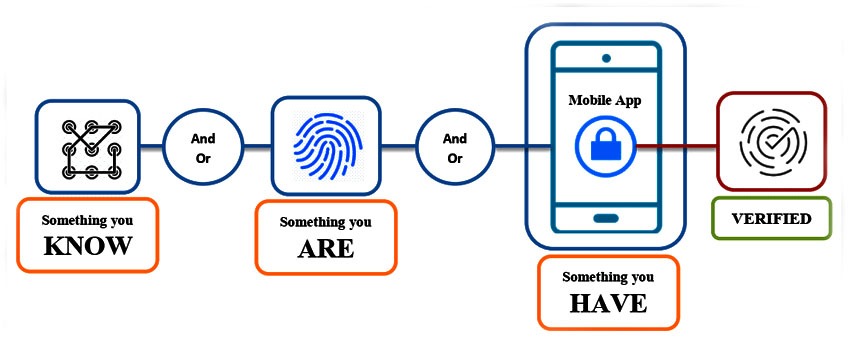MSIX is a modern Windows app package format that represents a significant evolution in how applications are distributed, installed, and managed. It combines the best features of traditional MSI installers with the performance and reliability of containerized app technologies from the Universal Windows Platform (UWP). This guide provides a complete overview of what MSIX is, detailing its core functionality, key differences with legacy formats, and practical usage for IT professionals and developers. The scope of this article covers the fundamental architecture, packaging process, and deployment mechanisms of MSIX.
What is an MSIX File?
An MSIX file is a Windows application package that serves as a container for all the files, libraries, and configuration data an application requires to run, all structured within a standardized file system layout. Built on the open-source MSIX Core technology, this format ensures broad compatibility across modern Windows systems.
The internal architecture of an MSIX file is based on the Open Packaging Conventions, the same standard used for familiar file formats like ZIP and DOCX. Within this structure, you will find the application’s executable files and dependencies, an AppxManifest.xml file that defines the app’s identity, capabilities, and system requirements, and a critical signature block that verifies the package’s authenticity and integrity.
How MSIX Files Work
MSIX operates on a principle of clean, predictable, and user-resilient installation. When a user initiates an install, the MSIX installer subsystem performs several automated steps:
- Validation and Trust Verification: The system first checks the digital signature of the package to ensure it comes from a trusted source and has not been tampered with.
- Container Expansion: The package is expanded into a dedicated, per-application container on the system.
- Registration: The application is registered with the Windows OS, creating Start menu entries and file associations without writing shared files or registry keys to the host system outside its container.
- Virtualization at Runtime: When the application runs, the MSIX container uses a filter driver to virtualize access to the file system and registry. This allows the app to believe it is modifying global system state, while all changes are contained within its own virtualized environment.

MSIX vs MSI: Key Differences
Understanding the differences between MSIX and the legacy Windows Installer (MSI) format is crucial for modern application management.
| Feature | MSI (Windows Installer) | MSIX (Modern Installer) |
|---|---|---|
| Installation & Modification | Relies on custom scripts and actions, which can be complex and error-prone. | Uses a declarative model defined in the manifest; installation is predictable and reliable. |
| System Impact | Makes direct, permanent changes to the system’s registry and file system. | Virtualizes registry and file system writes, ensuring a clean system upon uninstall. |
| Repair & Uninstall | Can leave behind orphaned files and registry entries. | Guarantees a clean, complete removal of the application. |
| User Experience | Often requires elevated permissions and user interaction. | Supports non-admin user installation and seamless updates. |
| Networking | Lacks built-in optimization for enterprise distribution. | Integrates natively with modern distribution systems and supports differential updates. |
MSIX vs EXE: How They Compare
While EXE installers are ubiquitous, their flexibility often leads to inconsistency and system management challenges. An EXE is an executable that runs a custom, often unique, installation script. MSIX provides a standardized, managed, and reliable alternative. The key differences are outlined in the table below.
| Feature | EXE (Setup Installer) | MSIX (Modern Installer) |
|---|---|---|
| Installation Method | Runs a custom, proprietary script that can vary dramatically between vendors. | Uses a declarative model defined in a standard manifest; installation is predictable and consistent. |
| System Impact & Reliability | Can fail mid-process, leaving the system in an unstable state. Makes direct, permanent changes to the OS. | Features atomic transactions; the install is fully committed or rolled back. Virtualizes changes for clean isolation. |
| Security Model | Often requires broad administrative permissions, increasing the attack surface. | Adheres to the principle of least privilege, declaring specific capabilities in its manifest. Packages must be signed. |
| Management & Deployment | Challenging to deploy and update at scale; each installer behaves differently. | Designed for modern management (e.g., Intune) and enterprise distribution, supporting differential updates. |
| Uninstall Process | Relies on a separate, often unreliable uninstaller that may leave behind files and registry entries. | Guarantees a clean, complete, and automatic removal of the entire application. |
MSIX Packaging Explained
MSIX packaging is the process of converting a legacy application (like an MSI or EXE) into the modern MSIX format. The primary tool for this is the free MSIX Packaging Tool from Microsoft. The process typically involves:
- Running the MSIX Packaging Tool on a clean “snapshot” virtual machine.
- Installing the application using its native installer (e.g., the original MSI or EXE).
- Letting the tool capture all file system and registry changes made during the installation.
- Editing the package to configure the manifest, define capabilities, and perform necessary fixes for applications not natively compatible with containerization.
This process creates a clean, self-contained MSIX package ready for distribution.
What is MSIX x64?
The term MSIX x64 simply refers to an MSIX package that contains a native 64-bit application. The MSIX format itself is architecture-agnostic. A single package can contain binaries for multiple architectures (x86, x64, ARM64). When you install such a package, the Windows OS automatically selects and installs the correct binaries for the device’s processor architecture.
MSIX Installer Overview
The MSIX installer is not a separate application that users download. It is a core component of the Windows 10 and Windows 11 operating systems, integrated into the shell. Users can install an MSIX installer package simply by double-clicking the .msix file. The built-in system handles the entire process of signature validation, container deployment, and registration seamlessly.
How to Install MSIX Packages
Installing an MSIX package is designed to be straightforward for end-users. The primary methods are:
- Double-Click Installation: The most common method. Simply double-click the .msix file, and Windows will handle the rest.
- Command Line: Use PowerShell for automated or silent installation: Add-AppxPackage -Path “C:\Path\To\YourApp.msix”
- Enterprise Deployment: IT administrators can deploy packages en masse using management tools like Microsoft Intune, Configuration Manager, or by placing them on a network share.
How to Uninstall MSIX Packages
Uninstalling is as clean and simple as installing, which is a core benefit of what is MSIX. Users can:
- Right-click the Start Menu icon and select “Uninstall.”
- Go to Settings > Apps > Apps & features, find the app, and click Uninstall.
- Use PowerShell: Remove-AppxPackage “YourAppPackageFullName”.
Unlike legacy uninstalls, this process removes 100% of the application, leaving no residual files or registry entries.
Advantages of MSIX
The move to MSIX offers numerous advantages for developers, IT pros, and users:
- Reliability and Clean Uninstall: The transactional installation and containerization ensure the system remains stable.
- Enhanced Security: Packages must be signed, and apps run in a constrained security context.
- Reduced Network Impact: Differential updates and optional features on-demand minimize download sizes.
- User-Resilient Installations: Non-admin users can install approved packages, and applications are resilient to user-caused corruption.
- Optimized for Modern Management: Perfect for cloud-based distribution in enterprises and virtual desktop solutions.

Compatibility with Windows Versions
Native support for the MSIX format is integrated into Windows 10 (version 1709 and later) and all versions of Windows 11. This native integration means the operating system inherently understands how to install, manage, and run applications from these packages without requiring any additional software.
For organizations or users still operating on legacy systems like Windows 7 or Windows 8.1, Microsoft offers the MSIX Core project. This is a separate, open-source compatibility framework that enables limited support for running MSIX packages on these unsupported Windows versions. It is crucial to understand that MSIX Core is not a native OS feature, and its functionality may not be fully equivalent to the experience on a modern, natively-supported Windows platform. This distinction is vital for planning enterprise-wide deployments, as relying on MSIX Core should be considered a transitional strategy rather than a long-term solution.
The MSIX Container and Its Benefits
The MSIX container is a key architectural component. It is not a heavyweight virtual machine but a lightweight isolation environment. Its benefits include:
- Isolation: Prevents application conflicts by virtualizing the app’s view of the file system and registry.
- Integrity: Application files are protected from modification after installation.
- Portability: The application’s runtime environment is consistent, making it highly portable across different Windows machines.
MSIX Signing: Why It Matters
Digital signing is a mandatory, non-negotiable requirement for every MSIX package. This foundational security mechanism is critical for establishing trust and integrity. A digital signature cryptographically verifies the publisher’s identity and guarantees that the package contents have not been tampered with after publication. Enforced by Windows security policy, the operating system will, by default, block the installation of any unsigned MSIX package, thereby preventing the execution of potentially malicious software. For enterprise environments, this is paramount for deploying trusted internal line-of-business applications across a corporate network, as it allows IT administrators to control which software is permitted to run.
Common MSIX File Types (.msix, .msixbundle, .msixupload)
When working with MSIX, you will encounter several distinct file extensions, each serving a specific purpose in the packaging and distribution workflow. Understanding these formats is key to effective application management.
- .msix: The standard, single-architecture package file. This is the fundamental building block used for direct installation.
- .msixbundle: A collection of multiple .msix packages. This bundle is typically used to combine different architecture-specific versions (x86, x64, ARM) of the same application into a single file for streamlined distribution.
- .msixupload: A file used specifically for uploading packages to the Microsoft Store. It contains the package and store metadata and is not used for direct installation on end-user devices.
MSIX vs APPX: Key Differences
APPX was the original package format for the Universal Windows Platform (UWP). MSIX is its direct evolution, building upon the foundation of APPX to create a universal format for all Windows application types. The core distinctions are summarized in the following table:
| Feature | APPX (UWP Package) | MSIX (Universal Package) |
|---|---|---|
| Primary Application Support | Designed exclusively for UWP (Universal Windows Platform) applications. | Supports UWP, Win32, WPF, and Windows Forms applications. |
| Primary Distribution Channel | Originally intended for and tightly coupled with the Microsoft Store. | Built for both the Microsoft Store and enterprise sideloading/management. |
| Packaging Tools | Limited tooling focused on UWP development in Visual Studio. | Includes robust tools like the MSIX Packaging Tool for converting legacy Win32 apps (MSI, EXE). |
| Enterprise Features | Lacks deep integration with enterprise-specific deployment and management scenarios. | Integrates natively with modern management tools and technologies like MSIX app attach for virtual desktop solutions. |
| Flexibility | A more rigid model centered on the sandboxed UWP app lifecycle. | Offers more flexibility for packaging complex, existing desktop applications while maintaining modern benefits. |
Should You Use MSIX for Your Apps?
The answer is increasingly yes. You should prioritize using MSIX if you require:
- Reliable, clean installations and uninstalls.
- To deploy software in a modern enterprise managed by Intune or similar tools.
- To streamline application delivery in VDI environments using MSIX app attach.
- To distribute software through the Microsoft Store.
For legacy applications with complex drivers or deep system integration, a thorough testing and potential repackaging effort is required.
Frequently Asked Questions (FAQs)
-
What is the difference between MSI and MSIX?
MSI is a legacy installer technology that uses scripts to modify the system, while MSIX is a modern package format that uses containerization for clean, reliable, and user-resilient application management. MSIX offers superior security, reliability, and management features.
-
What is the difference between MSIX and APPX?
APPX is the package format for UWP apps. MSIX is the successor that supports packaging Win32, WPF, and Windows Forms applications in addition to UWP, making it a universal packaging format for all Windows app types.
-
How do I open a .MSIX file?
You do not “open” it like a document. To install the application within, simply double-click the .msix file. Windows will automatically launch the integrated installer. To inspect its contents, you can rename the file extension to .zip and open it with any archive utility.
-
Where does MSIX get installed?
MSIX packages are installed to the C:\Program Files\WindowsApps folder, which is a protected system directory. Each application runs from its own containerized subdirectory within this location.
-
Does MSIX replace MSI?
While MSIX is the modern replacement and strategic direction for Windows application packaging, MSI is not deprecated. A vast number of legacy applications still use MSI, and it remains a supported technology. However, new applications should be packaged using MSIX.
-
What are the advantages of MSIX?
The primary advantages include reliable installations, guaranteed clean uninstalls, enhanced security through signing and containment, reduced network costs via differential updates, and seamless integration with modern enterprise management tools.
-
What is the Windows MSIX package?
This term refers to the application package itself, the .msix file that contains the app and its dependencies, ready for installation on a Windows machine.
Additional Tips for MSIX Packaging
- Start Simple: Begin your packaging journey with non-complex, well-behaved applications.
- Use a Clean Machine: Always use a virtual machine with a clean snapshot for packaging to avoid capturing unrelated system changes.
- Test Thoroughly: Validate your packaged application on different Windows versions and user profiles to ensure compatibility.
- Plan for Identity: Understand that changing the package identity (Name/Publisher) creates a completely different application from the OS perspective.
The Future of MSIX: What’s Next?
The future of MSIX is centered on deeper integration with cloud-native application management. Technologies like MSIX app attach are revolutionizing application delivery in virtual desktop solutions by decoupling apps from the core OS image.
We can expect continued enhancements in container performance, broader tooling support, and more automated, predictive packaging processes. For businesses, this means even greater agility and lower management overhead for their application estate.
Leveraging MSIX with Apps4Rent
As a Microsoft Solutions Partner with over 20 years of experience providing cloud hosting and virtual desktop solutions, Apps4Rent is perfectly positioned to help you harness the power of MSIX. We integrate these modern packaging technologies into our managed cloud services, ensuring our customers can deploy and manage their applications with maximum reliability and efficiency. This allows you to focus on your business while we handle the underlying infrastructure and application delivery framework.


